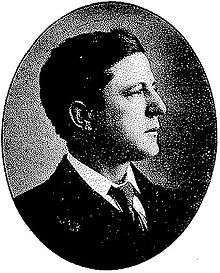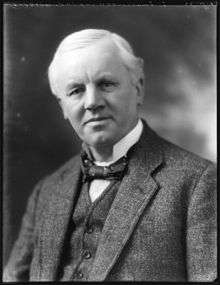East Ham South (UK Parliament constituency)
| East Ham South | |
|---|---|
|
Former Borough constituency for the House of Commons | |
 East Ham South within Essex from 1918 to 1950 | |
| County |
1918–1965: Essex 1965–1974: Greater London |
| 1918–1974 | |
| Number of members | One |
| Replaced by | Newham North East and Newham South |
| Created from | Romford |
East Ham South was a parliamentary constituency centred on the East Ham district of London, which was in Essex until 1965. It returned one Member of Parliament (MP) to the House of Commons of the Parliament of the United Kingdom, elected by the first past the post voting system.
History
The constituency was created by the Representation of the People Act 1918 for the 1918 general election. It was abolished for the February 1974 general election.
Boundaries
The seat was established in 1918, as a division of the County Borough of East Ham in the south western part of the historic county of Essex. It comprised the Beckton and North Woolwich, Central East and Central West wards.
By the time of the next major redistribution of parliamentary seats, which took effect in 1950, East Ham had been re-warded. The constituency then comprised Castle, Central, Greatfield, South and Wall End wards.
In 1965 East Ham was joined with other districts to form the London Borough of Newham in Greater London. It is part of east London.
In the 1974 redistribution the constituency was abolished and its area included in the new Newham North East seat.
Members of Parliament
| Election | Member | Party | |
|---|---|---|---|
| 1918 | Allen Clement Edwards | Coalition National Democratic | |
| 1922 | Alfred John Barnes | Labour Co-operative | |
| 1923 | |||
| 1924 | |||
| 1929 | |||
| 1931 | Malcolm Campbell-Johnston | Conservative | |
| 1935 | Alfred John Barnes | Labour Co-operative | |
| 1945 | |||
| 1950 | |||
| 1951 | |||
| 1955 | Albert Edward Oram | Labour Co-operative | |
| 1959 | |||
| 1964 | |||
| 1966 | |||
| 1970 | |||
| Feb 1974 | constituency abolished | ||
Elections
Elections in the 1910s

| Party | Candidate | Votes | % | ± | |
|---|---|---|---|---|---|
| National Democratic | 7,972 | 42.8 | n/a | ||
| Unionist | Robert Frederick Frank Hamlett | 5,661 | 30.3 | n/a | |
| Labour | Rt Hon. Arthur Henderson | 5,024 | 26.9 | n/a | |
| Majority | 2,311 | 12.5 | n/a | ||
| Turnout | 57.5 | n/a | |||
| National Democratic win | |||||
- endorsed by the Coalition Government.
Elections in the 1920s

| Party | Candidate | Votes | % | ± | |
|---|---|---|---|---|---|
| Labour | Alfred John Barnes | 10,566 | 48.1 | +21.2 | |
| Liberal | Edward Smallwood | 6,567 | 30.0 | n/a | |
| National Liberal | Allen Clement Edwards | 4,793 | 21.9 | -20.9 | |
| Majority | 3,999 | 18.1 | 30.6 | ||
| Turnout | 66.3 | +8.8 | |||
| Labour gain from National Democratic | Swing | n/a | |||
| Party | Candidate | Votes | % | ± | |
|---|---|---|---|---|---|
| Labour | Alfred John Barnes | 11,402 | 49.2 | +1.1 | |
| Liberal | Edward Smallwood | 8,772 | 37.8 | +7.8 | |
| Unionist | Herbert Joseph Ward | 3,011 | 13.0 | n/a | |
| Majority | 2,630 | 11.4 | -6.7 | ||
| Turnout | 68.5 | +2.2 | |||
| Labour hold | Swing | -3.4 | |||
| Party | Candidate | Votes | % | ± | |
|---|---|---|---|---|---|
| Labour | Alfred John Barnes | 13,644 | 51.9 | +2.7 | |
| Liberal | Edward Maynard Coningsby Denney | 12,656 | 48.1 | +10.3 | |
| Majority | 988 | 3.8 | -7.6 | ||
| Turnout | 75.9 | +7.4 | |||
| Labour hold | Swing | -3.8 | |||
| Party | Candidate | Votes | % | ± | |
|---|---|---|---|---|---|
| Labour | Alfred John Barnes | 18,956 | 54.3 | +2.4 | |
| Unionist | Hubert John Duggan | 8,854 | 25.4 | n/a | |
| Liberal | Edward Maynard Coningsby Denney | 7,085 | 20.3 | -27.8 | |
| Majority | 10,102 | 28.9 | +25.1 | ||
| Turnout | 73.8 | -2.1 | |||
| Labour hold | Swing | n/a | |||
Elections in the 1930s
| Party | Candidate | Votes | % | ± | |
|---|---|---|---|---|---|
| Conservative | Malcolm Campbell-Johnston | 18,300 | 53.8 | +28.4 | |
| Labour | Alfred John Barnes | 15737 | 46.2 | -8.1 | |
| Majority | 2,563 | 7.6 | |||
| Turnout | 70.3 | ||||
| Conservative gain from Labour | Swing | +18.2 | |||
| Party | Candidate | Votes | % | ± | |
|---|---|---|---|---|---|
| Labour | Alfred John Barnes | 18,949 | 59.3 | +13.1 | |
| Conservative | Malcolm Campbell-Johnston | 12,993 | 40.7 | -13.1 | |
| Majority | 5,956 | 18.6 | 26.2 | ||
| Turnout | 66.6 | ||||
| Labour gain from Conservative | Swing | +13.1 | |||
Elections in the 1940s
| Party | Candidate | Votes | % | ± | |
|---|---|---|---|---|---|
| Labour | Alfred John Barnes | 19,168 | 74.0 | +14.7 | |
| Conservative | MG Munthe | 6,734 | 26.0 | -14.7 | |
| Majority | 12,434 | 48.0 | +29.4 | ||
| Turnout | 69.9 | ||||
| Labour hold | Swing | +14.7 | |||
Elections in the 1950s
| Party | Candidate | Votes | % | ± | |
|---|---|---|---|---|---|
| Labour | Rt Hon. Alfred John Barnes | 23,002 | 62.1 | ||
| Conservative | CE Jordan | 10,956 | 29.6 | ||
| Liberal | Cecil Arthur Borrott | 2,424 | 6.5 | ||
| Communist | ECW Thomas | 401 | 1.1 | ||
| Socialist (GB) | Harry Young | 256 | 0.7 | ||
| Majority | 12,046 | 32.5 | |||
| Turnout | 84.4 | ||||
| Labour hold | Swing | ||||
| Party | Candidate | Votes | % | ± | |
|---|---|---|---|---|---|
| Labour | Rt Hon. Alfred John Barnes | 23,704 | 64.9 | ||
| Conservative | John Wilfred Barter | 12,813 | 35.1 | ||
| Majority | 10,891 | 29.8 | |||
| Turnout | 82.5 | ||||
| Labour hold | Swing | ||||
| Party | Candidate | Votes | % | ± | |
|---|---|---|---|---|---|
| Labour | Albert Edward Oram | 19,808 | 64.1 | -0.8 | |
| Conservative | Anthony J Pickford | 11,109 | 35.9 | +0.8 | |
| Majority | 8,699 | 28.1 | -1.6 | ||
| Turnout | 30,917 | 73.1 | -9.4 | ||
| Labour hold | Swing | -0.8 | |||
| Party | Candidate | Votes | % | ± | |
|---|---|---|---|---|---|
| Labour | Albert Edward Oram | 18,230 | 61.5 | ||
| Conservative | Reginald J Watts | 11,422 | 38.5 | ||
| Majority | 6,808 | 23.0 | -5.2 | ||
| Turnout | 29,652 | 74.6 | |||
| Labour hold | Swing | ||||
Elections in the 1960s
| Party | Candidate | Votes | % | ± | |
|---|---|---|---|---|---|
| Labour | Albert Edward Oram | 17,069 | 66.0 | ||
| Conservative | Reginald J Watts | 8,797 | 34.0 | ||
| Majority | 8,272 | 32.0 | |||
| Turnout | 25,866 | 67.9 | |||
| Labour hold | Swing | ||||
| Party | Candidate | Votes | % | ± | |
|---|---|---|---|---|---|
| Labour | Albert Edward Oram | 17,543 | 69.9 | +3.9 | |
| Conservative | Ivor Robert Stanbrook | 7,540 | 30.1 | -3.9 | |
| Majority | 10,003 | 39.8 | +7.8 | ||
| Turnout | 25,083 | 65.7 | -2.2 | ||
| Labour hold | Swing | +3.9 | |||
Elections in the 1970s
| Party | Candidate | Votes | % | ± | |
|---|---|---|---|---|---|
| Labour | Albert Edward Oram | 13,638 | 61.9 | -8.0 | |
| Conservative | Christopher Murray Jackson | 8,402 | 38.1 | +8.0 | |
| Majority | 5,236 | 23.8 | -16.0 | ||
| Turnout | 22,040 | 55.1 | |||
| Labour hold | Swing | -8.0 | |||
References
- ↑ British Parliamentary Election Results 1918-1949, FWS Craig
- ↑ British Parliamentary Election Results 1918-1949, FWS Craig
- ↑ British Parliamentary Election Results 1918-1949, FWS Craig
- ↑ British Parliamentary Election Results 1918-1949, FWS Craig
- ↑ British Parliamentary Election Results 1918-1949, FWS Craig
- ↑ British Parliamentary Election Results 1918-1949, FWS Craig
- ↑ British Parliamentary Election Results 1918-1949, FWS Craig
- ↑ British Parliamentary Election Results 1918-1949, FWS Craig
- ↑ British parliamentary election results, 1950-1973 by FWS Craig
- ↑ British parliamentary election results, 1950-1973 by FWS Craig
- ↑ British parliamentary election results, 1950-1973 by FWS Craig
- ↑ F W S Craig, British Parliamentary Election Results 1950-1973; Political Reference Publications, Glasgow 1973
- ↑ F W S Craig, British Parliamentary Election Results 1950-1973; Political Reference Publications, Glasgow 1973
- ↑ British parliamentary election results, 1950-1973 by FWS Craig
- ↑ British parliamentary election results, 1950-1973 by FWS Craig
- Craig, F. W. S. (1983) [1969]. British parliamentary election results 1918-1949 (3rd ed.). Chichester: Parliamentary Research Services. ISBN 0-900178-06-X.
- Leigh Rayment's Historical List of MPs – Constituencies beginning with "E" (part 1)
